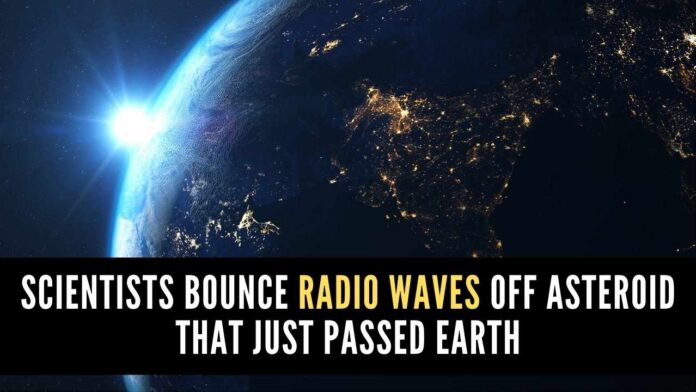
Radio waves could add to asteroid-defence strategy
A group of researchers has sent radio signals into space with the purpose of bouncing them off a 500-foot asteroid to learn about its interior. The results of the experiment could aid efforts to defend Earth from larger asteroids that could cause significant damage.
This experiment was the first time an asteroid observation was attempted at such low frequencies. The experiment also served as a test for probing an asteroid larger than 2010 XC15.
The High-Frequency Active Auroral Research Program (HAARP), a powerful transmitter in remote Alaska, aimed its antennas at asteroid 2010 XC15, a space rock categorized as a near-Earth potentially hazardous asteroid, to send long wavelength radio signals.
“We will be analyzing the data over the next few weeks and hope to publish the results in the coming months,” said Mark Haynes, lead investigator on the project and a radar systems engineer at NASA’s Jet Propulsion Laboratory in Southern California.
“This shows the value of HAARP as a potential future research tool for the study of near-Earth objects,” he added.
Several programs exist to quickly detect asteroids, determine their orbit, and shape and image their surface, either with optical telescopes or the planetary radar of the Deep Space Network, NASA’s network of large and highly sensitive radio antennas in California, Spain, and Australia.
Long-wavelength radio signals can reveal the interior of objects.
HAARP, using three powerful generators, began transmitting chirping signals of long wavelengths this week and continued sending them uninterrupted until the scheduled end of the 12-hour experiment.
Asteroid Apophis, discovered in 2004, will make its closest approach to Earth on April 13, 2029. It will come within about 20,000 miles of Earth, closer than the many geostationary satellites orbiting the planet.
[With Inputs from IANS]
PGurus is now on Telegram. Click here to join our channel and stay updated with all the latest news and views
For all the latest updates, download PGurus App.
- CM’s post in buzzing capital like Delhi not ceremonial, office holder has to be available 24×7: Delhi HC observes - April 29, 2024
- Amit Shah’s doctored video case: Delhi Police summons Telangana CM Revanth Reddy, other Congress leaders - April 29, 2024
- Smriti Irani files nomination from crucial Amethi seat; holds massive roadshow ahead of filing her nomination papers - April 29, 2024







